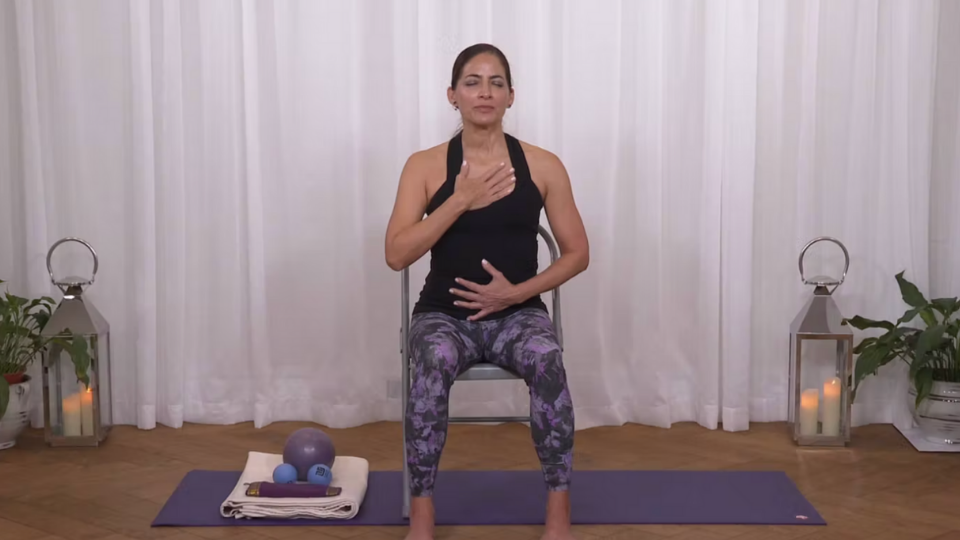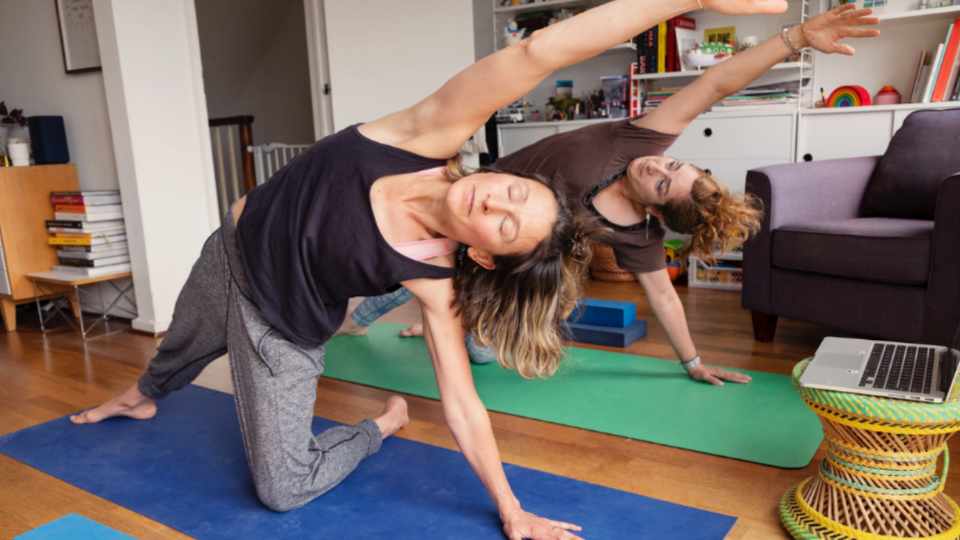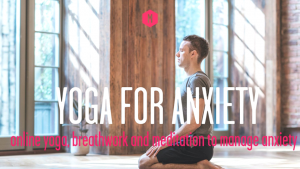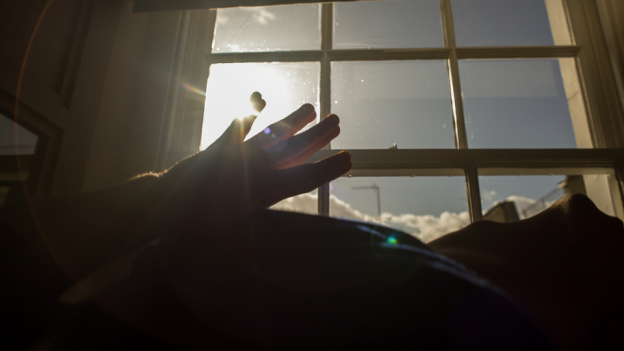
One in six people experience mental health conditions. Vanessa Michielon shares five ways Yoga and Pilates can have a significant impact on our mental health and improve the quality of our life.
According to Mind (1), one in six people experiences a common mental health problem in any given week in England. The worldwide global prevalence of anxiety and depression also increased by 25% in the first year of the pandemic (2).
To respond to the rise in mental health conditions, specialists and GPs have increasingly recommended mindful movement practices such as Yoga and Pilates. They are being recommended as effective complementary strategies to improve our resilience and support our emotional wellbeing.
Several studies have been revealing a great efficacy of both practices in stress reduction, mood elevation and brain health. For instance, a research project from 2018 concluded that practising Pilates resulted in a statistically large reduction in the symptoms of depression and anxiety, and in feelings of fatigue and lack of energy (3).

Another study from the same year found out that Yoga and Meditation practitioners presented a smaller right amygdala (the alarm bell of the brain) volume over time. This shows that these interventions can help us reduce our reactivity to stress (4). It also seems that both Pilates and Yoga can increase HRV (heart rate variability), which is an indirect measure of how well our autonomic nervous system copes with stress (5,6).
“a body free from nervous tension and fatigue is the ideal shelter provided by nature for housing a well-balanced mind, fully capable of successfully meeting all the complex problems of modern living”.
Joseph Pilates
Why are these practices so powerful in supporting our mental health, despite originating in very different historical and cultural contexts, and having different goals at their core?
In part, this comes down to their shared emphasis on the mind-body connection. There is an understanding that the state of our body influences the state of our mind and vice-versa.
More research is needed to help us understand the precise mechanisms of how Yoga and Pilates work in improving our mental health. But here are some of the elements, which overall seem to contribute to how yoga and pilates can support our mental health:
1) Cultivate mindfulness and increase our tolerance to distress

Yoga and Pilates are extremely beneficial for those of us, who struggle with mental health conditions. Sometimes mindfulness practices that require stillness can be too challenging, but we can achieve similar benefits by keeping our body busy. When we concentrate on the precise execution of a movement or on the physical sensations produced by a certain pose, our mind learns how to cultivate a clear focus more effortlessly.
We train our capacity to observe our experience and also practice mindfulness of our body and breath. Whether we are holding plank or chair pose until our body shakes, or we enter the last minute of a Yin Yoga pose – we learn how to gradually decrease our emotional reactivity to things that challenge us. We learn how to better tolerate safe discomfort.
Movements and sensations that once would have us hold our breath and cause our fear response or some frustration to rapidly kick in, can slowly be embraced with a more open mind. We begin to notice that pain and discomfort, like everything, are transitory, and that things that felt out of reach at first, are actually possible.
Read more about yoga for stress and anxiety in this complete guide
2) Self-regulation tools that create physiological and psychological changes in our internal landscape, both in the short and long term.
Most mental health conditions present with imbalances in the autonomic nervous system. Altered levels of certain chemicals, increases activity in the brain regions connected to fear and decreases activity in those areas that support regulation and decoding of threats (7).
When self-regulation works properly, we can easily return to our homeostatic balance. We feel grounded, centred, and in the moment, even in difficult circumstances.
Both Joseph Pilates and the Yogis recognised that the state of our body and breath have a huge impact on the state of our mind. By altering the tone of our muscles, the rhythm of our heart beat and the quality of our breath, we can alter the way we feel mentally and emotionally. This is coherent with most recent views in Neuroscience. By changing our chemical and physical basis, movement allows us to change the inputs to the global emotional moment, leaving us with a different sense of how we feel (8).
The truth is, current research is still trying to grasp the complexity of how Yoga and Pilates facilitate self-regulation.

– Feel good hormones
Exercise in general reduces the production of stress hormones (adrenaline, cortisol), and increases the production of feel-good hormones (dopamine, endorphins).
Compared to other generic forms of physical activity, Yoga seems to offer further benefits at the level of our brain. For instance, a famous study from 2010 (9) documented a higher increase in the level of GABA after a 12 weeks Yoga intervention. This is compared to walking with the same calories expenditure. GABA is a key neurotransmitter, which often is reduced in mood and anxiety disorders. GABA has the important role of repressing fear-based pathways.
The authors proposed the hypothesis that Yoga poses and breathing patterns could stimulate our vagus nerve in specific ways, which resulted in a shift towards the parasympathetic state of our autonomic nervous system (the calm “rest and digest” state).

– The Breath
In Yoga and Pilates the breath focus is a key element.
Think about the breath, when we feel agitated, our breath becomes shallow, chest-focused and fast. In contrast, when we feel relaxed we usually tend to breathe slowly and use our lungs completely. This allows our diaphragm to move freely. By consciously slowing our breath down and deepening it through practice, we down-regulate our nervous system, which calms our body and mind.
Alternatively, when we feel numb, slow, and sluggish, we can breathe slightly faster and emphasise the inhalation. This breath can help us quickly lift our energy and feel more vital and active.
– A good stretch!
The stretching component that both Yoga and Pilates offer also plays a big role in inducing a relaxation response. Stretching shifts us into the parasympathetic state, especially when this is done in a gentle, passive way. Stretching can release muscular tension from our body and this signals to our brain that we are safe and don’t need to escape or fight, so we can settle and ground more easily.
3) Improve our concentration.
Pilates and Yoga demand constant focus. When we clear our minds and connect to the present moment in a class, little space is left for rumination or obsessing about the past or future.
This is one of the biggest additional benefits of movement done with purpose in stress management. Any activities that require paying attention with purpose help us strengthen our prefrontal cortex. This is the area of the brain dedicated to analysis and decision making.
In many mental health disorders, the prefrontal cortex is usually weaker and the capacity to rationally decipher threats compromised. Strengthening this area means improving our skills to decode our environment skilfully and to reduce our emotional impulsivity.
4) A sense of agency, self-affirmation and confidence
Poor mental health is often accompanied by feelings of unworthiness and not being able to meet our life’s demands. When we dedicate time to these practices, we often develop, strengthen and master new skills. This can lead to an improved sense of confidence and agency. We feel capable and in charge and this is the opposite of feeling anxious or depressed.

As Caroline Williams writes, any movement that strengthens muscles and bones can change the content of our inner commentary for the long haul. Moving in a way that makes us stronger can dramatically change our sense of who we are and what we can achieve in life.
People who do more physical activity tend to score higher on a scale of global self-efficacy, which measures the sense of how much control they have over their lives.
Studies using weight bearing exercise as a treatment for anxiety have found that getting stronger seems to make at least some of the angst go away, boosting self-worth, reducing symptoms of stress, and improving sleep. Interestingly, the improvements happen regardless of significant changes in the size of the muscles (10).
Other studies looking at how training our muscles can improve our overall mental and emotional wellbeing have suggested that specific substances, labelled “hope molecules”, could play a significant role. When they contract, our muscles produce proteins, the myokines, which are key in the health of our brain and in preventing depression.
“Hope can begin in your muscles. Every time you take a single step, you contract over two hundred myokine-releasing muscles. The very same muscles that propel your body forward also send proteins to your brain that stimulate the neurochemistry of resilience”.
McGonigal, K (11)
5) Improve our mental outlook and offer social connection and community

On the individual level, stepping on a mat and building a regular routine is an act of self-care and self-compassion – we internalise the idea that we are worthy and we deserve time for ourselves. When this act is shared with other people, additional benefits arise.
Given that social isolation increases both the risk of developing and the severity of presentation in many mental health issues (12), practising in a safe space, which builds some sense of community, can further improve our wellbeing.
This sense community and social connection doesn’t only happen in real life. From my experience, even virtual space can create a sense of belonging and connectedness, which can have a ripple effect in your other relationships and interactions.

The MFML subscription includes a FREE community class every month, and you can also try the special live online workshops and retreats – a great way to meet the MFML online community and build virtual social connections!
Yoga and Pilates truly can have a significant impact on our health and quality of our life. A small, simple, but maintained practice can make our emotional challenges feel more manageable.
Read more in Yoga for Stress and Anxiety: A Complete Guide

Vanessa Michielon, one of our fabulous MFML teachers, is a Movement specialist and founder of the Transformative Movement method, empowering people of all walks of life to embrace Yoga, Pilates and Dance in order to improve physical health and achieve a balanced state of mind.
She is trained in Advanced Yoga Psychology, Yoga Therapy for Anxiety and Applied Polyvagal Theory in Yoga Therapeutics.
Vanessa believes that embodied movement can truly transform our life and wishes to help others find joy and purpose in their practice. Connect with Vanessa on Instagram
Photo credit – yoganadphoto.com
Explore Vanessa’s Classes on MFML

References
- (1) Mind website: https://www.mind.org.uk
- (2) WHO website, https://www.who.int/news/item/02-03-2022-covid-19-pandemic-triggers-25-increase-in-prevalence-of-anxiety-and-depression-worldwide
- (3) Fleming, K. & Herring, M. (2018) The effects of pilates on mental health outcomes: A meta-analysis of controlled trials. In Complementary therapies in medicine, vol. 37.
- (4) Gotink, R. A. et al. (2018). Meditation and yoga practice are associated with smaller right amygdala volume: the Rotterdam study. Brain Imaging and Behaviour Dec 12(731).
- (5) Cavina, A. et al (2021). Effects of 12-week Pilates training program on cardiac autonomic modulation: a randomized controlled clinical trial. In Journal of comparative effectiveness research, Vol 10, n. 18.
- (6) Tyagi, A. & Cohen, M. (2016). Yoga and heart rate variability: A comprehensive review of the literature. International Journal of Yoga Jul-Dec 9(2), 97–113.
- (7) Mason, H. & Birch, K. (eds) (2018). Yoga for Mental Health. Handspring Publishing Limited.
- (8) Williams, C. (2021). Move. The new science of body over mind. Profile Books.
- (9) Streeter, C. C. et al. (2010). Effects of yoga versus walking on mood, anxiety, and brain GABA levels: a randomized controlled MRS study. The Journal of Alternative and Complementary Medicine 16(11), 1145-1152.
- (10) O’Connor, P. J. et al. (2010) Mental health benefits of strength training in adults. In American Journal of Lifestyle Medicine, vol. 4(5), 377-96.
- (11) McGonigal, K. (2019). The joy of movement. San Francisco, CA: Avery.
- (12) Cornwell, E. & Waite, L. (2009). Social disconnectedness, perceived isolation, and health among older adults. Journal of Health and Social Behaviour, 50(1), 31-48.





Leave a Reply